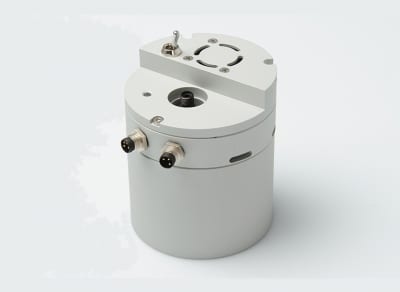Color measurements using color spectroscopy employs reflection spectroscopy to measure exact wavelengths of light. The sensitivity of the human eye can distinguish approximately 10 million different colors. This may sound like a lot but in the grand scheme of color, it comes up inadequate, and not nearly quantitative enough for many important color applications.
The perception of color results when light strikes an object and some wavelengths of light are absorbed while other wavelengths are reflected. The wavelengths that are reflected then enter the eye, the color that is perceived is dependent on which wavelengths are reflected. The visible light spectrum (roughly between 380-750 nm on the electromagnetic spectrum), but the human eye is more sensitive to some wavelengths than others with a sensitivity peak in the green spectrum near 555 nm causing greens to appear brighter. At 490 nm, for example, sensitivity is only about 20% of that at 555 nm. Color spectroscopy is therefore ideal for obtaining exact wavelengths of color and objectively quantifying color values.
Color measurement systems are generally designed to cover the range between 380-780 nm with a spectral resolution around 5 nm (FWHM). Avantes offers the advantage of fast data acquisition that allows for high production rates when measuring the color of objects or the color of light from a source.
In addition to high-resolution, fast acquisition spectrometers, Avantes also offers the specialized sampling accessories that reflection color measurements often require such as reflection probes and integrating spheres. The Avasoft-COL module available for the AvaSoft suite delivers L*a*b* color model results including parameters for brightness, hue, and chroma based on standards from the International Commission on Illumination (CIE) and displays the results in a CIELAB chart complete with with the corresponding ΔELab, ΔL*, Δa*, or Δb* values or as a series over time. This module includes a color database, reference color can be saved to or loaded from this database.
Applications for Color Spectroscopy
Color measurements are useful in a variety of industrial applications such as the manufacturing of paints, dyes, cosmetics, textiles, paper, as well as agricultural applications in wine production and fruit harvesting as well as in the manufacturing of LEDs. In the biological sciences, color measurements might be used to study the structure of flower petals or the composition of bird feathers and butterfly wings.
 My Cart
My Cart 


